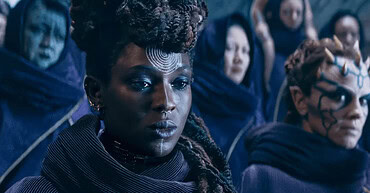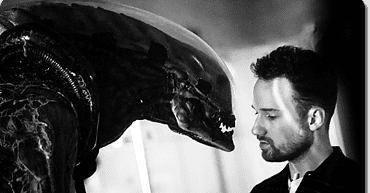Most of the surface-level conversation surrounding Jane Schoenbrun’s brilliant and dark horror film I Saw The TV Glow revolves around the similarities between its central piece of pop culture and a particular TV touchstone: Buffy The Vampire Slayer. This makes sense since The Pink Opaque, the fictional cult TV show that captivates main characters Owen (Justice Smith) and Maddie (Brigette Lundy-Paine), shares multiple elements pertaining to Buffy: kickass female protagonists, a blend of ‘myth’ episodes, and even references to a Bronze-esque venue for teen heroes to unwind after battling monsters. A cameo by Amber Benson, a favorite from Buffy, further solidifies this connection.

However, the Buffy parallels are just one part of the homage game in Schoenbrun’s film, as Owen and Maddie delve deeper into whatever it is that The Pink Opaque is trying to convey. Despite its late-night timeslot, the show airs on a Nickelodeon-like network rather than a cool young-adult channel, contributing to its perception as juvenile, although no less frightening thanks to its quirky monster designs. There’s also a layer of magical realism pervading the series, contrasting with Buffy’s treatment of monster-slaying as part of high school life.
Schoenbrun enriches the narrative with another homage through late-film appearances from Danny Tamberelli and Michael Maronna, stars of Nickelodeon’s The Adventures Of Pete And Pete. Recognizing these cameos highlights how elements from beloved childhood shows like Pete And Pete influence The Pink Opaque; for example, one of its few monsters resembles a horror version of ice cream mascot Mr. Tastee. Just like in the alienated world inhabited by adolescents Tara and Isabel, we see nods to this type of storytelling via unique filming angles evocative of Nickelodeon’s style.

There’s a clear way to read I Saw The TV Glow, one explored by Emily St. James at Vulture with Schoenbrun’s endorsement: Owen’s story parallels what happens when transitioning becomes unbearably frightening.
Maddy prompts Owen throughout the film to take this leap with her even if it might seem self-destructive from a logical perspective. Herein lies magic—a crucial element that mirrors childhood experiences and evokes questions about possibilities. In essence, it reflects on whether life can indeed be as enchanting and mysterious as it appeared during youth.

As these themes unfold, Owen manifests sheer claustrophobia, his mundane life pushing toward what seems like an inevitable end—a relatable yet distant narrative underpinning trans experiences when considering societal oppression against transitioning.

Furthermore, recalling nostalgic childhood moments syncs well with understanding characters’ journeys. When Maddy invites Owen over to watch an episode, a bond forms beyond shared interests—hinting at lost or discovered selves within their interaction, paralleling experiential phases experienced by many.
The inclusion of magical realism within narratives such as Pete And Pete elevates connections between characters’ surreal adventures while tackling complex themes like growing up without relinquishing innate magic.
This methodology gently draws audiences towards thematic undertones present across various media works integrated seamlessly into movies reflecting trans perspectives portrayed poignantly within personal transitions akin Owen’s illustrated plight capturing emotions authentically lending empathy soundly contextualized throughout cinematic journey resonating vibrantly encapsulating profound nuances making narrative compellingly powerful.
 Follow Us
Follow Us





